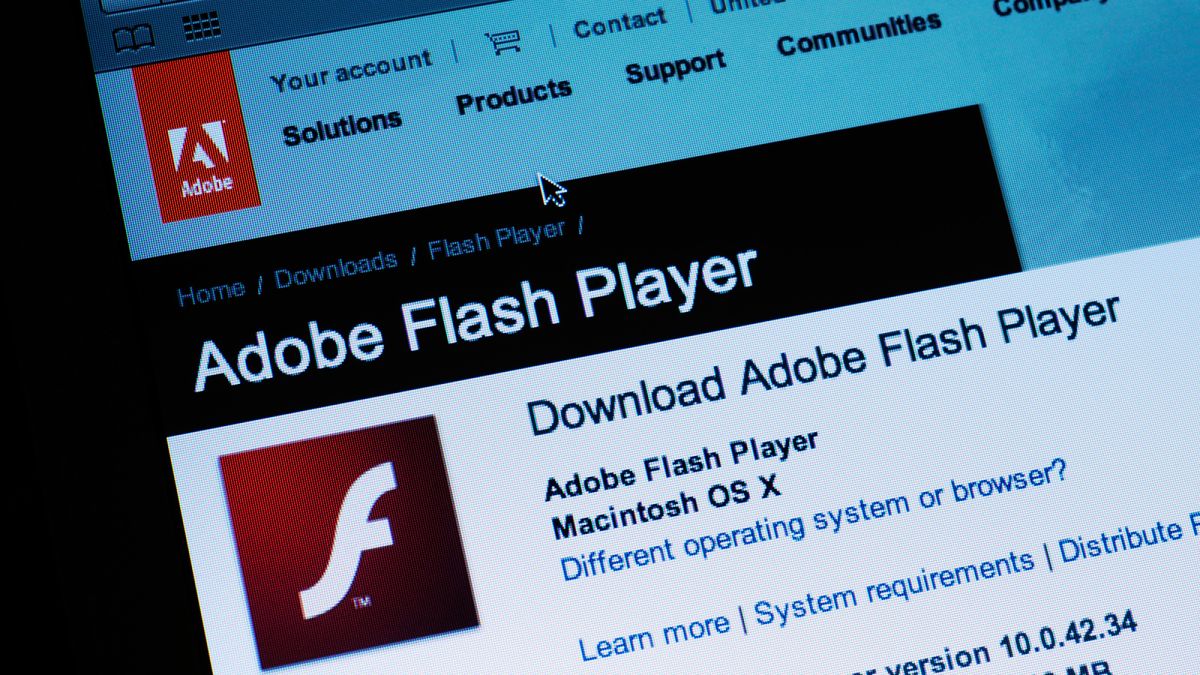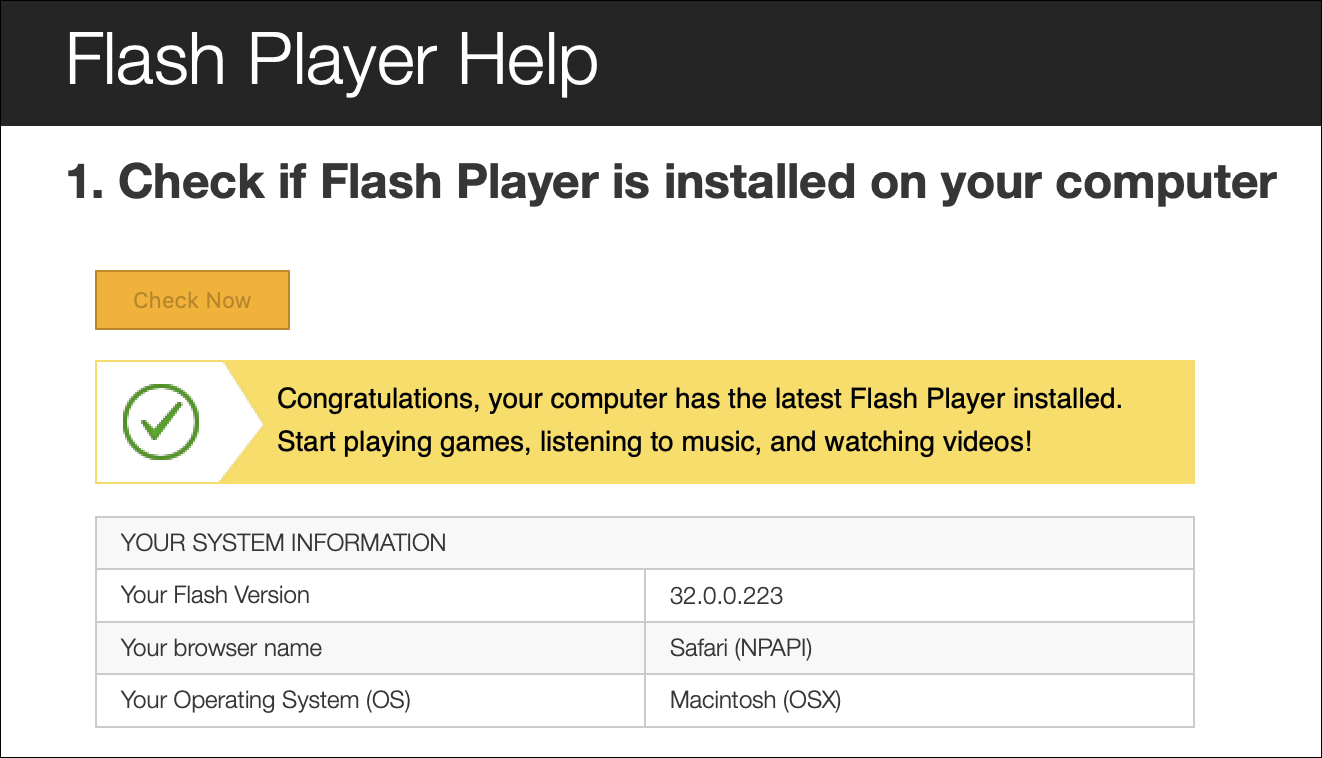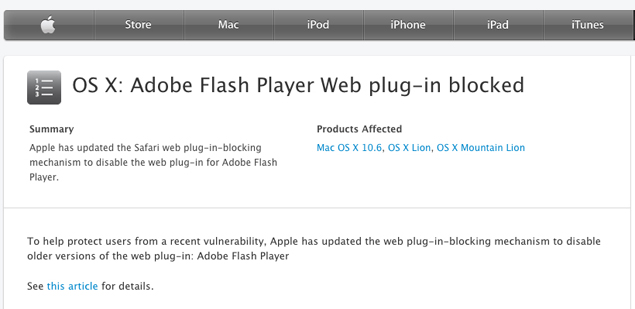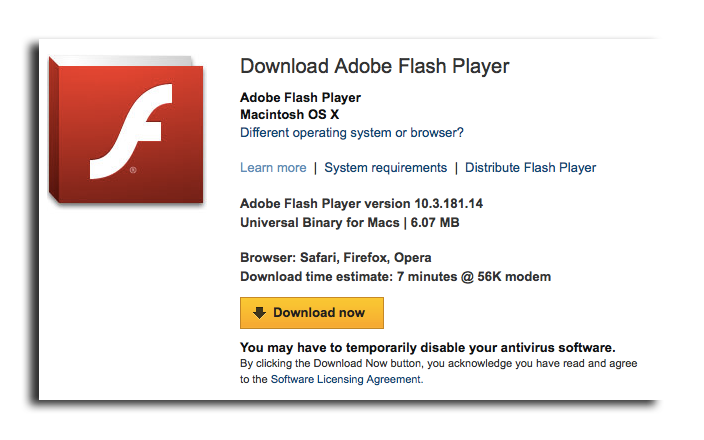
- Mac os x adobe flash update how to#
- Mac os x adobe flash update install#
- Mac os x adobe flash update update#
- Mac os x adobe flash update software#
See also: Is your Mac ready for Big Sur? Important Steps before you UpgradeĪlthough you’ve no doubt heard of Adobe’s Flash Player, you may not be that familiar with what it is used for. This means that Flash Player will no longer be distributed, supported or updated by Adobe. If you don’t keep up with tech news, you may have learned about this from a pop-up like the one above. The only way they can do that is by maintaining streams of threat intelligence on which their security teams can draw.Adobe Flash Player will officially reach its end-of-life (EOL) status on Decemafter nearly 25 years. These security measures will help them to monitor for suspicious activity on their endpoints and lead to Apple malware removal.įinally, organizations need to make sure they have insight into some of the latest attack campaigns. They also should use technical controls as part of an endpoint detection and response (EDR) strategy. They should begin by building a security-aware culture that uses ongoing awareness training to educate their employees about social engineering techniques, including the use of Adobe Flash Player malware, to target them. Organizations can protect themselves against crafty malware, such as OSX.Shlayer, by largely following best practices that can help keep them safe from ransomware.

Mac os x adobe flash update how to#
How to Defend Against Apple Malware Like OSX.Shlayer However, the campaign was still live, serving up new notarized payloads, on Aug. 28, 2020, and revoked the developer code-signing certificates used to sign the payloads. Objective-See reported the issue to Apple on Aug. This enabled the payloads to run on a macOS computer without raising users’ fears. In this campaign, the malicious actors managed to get their payloads notarized via the spctl command.
Mac os x adobe flash update software#
This process helps to protect users against Apple malware and assuage their fears when running software they’ve downloaded from the Internet. As explained on Apple’s website, the tech giant uses notarization as a means to automatically scan software for malicious content. What set this threat apart was that its adware payloads were notarized by Apple. Some months later, SentinelOne uncovered ZShlayer, a new variant of the well-known macOS threat. After being named by Kaspersky as the “most common threat on the macOS platform” in 2019, OSX.Shlayer attracted the attention of Intego in June 2020 by spreading through malicious Google search results. Many of those samples’ Apple Disk Images ( DMGs) contained the signature of a real Apple developer and used legitimate system applications to target users of macOS versions 10.10.5 to 10.14.3.
Mac os x adobe flash update update#
A year later, Carbon Black’s Threat Analysis Unit (TAU) came across some new samples of the malware disguised as Adobe Flash update software.

It’s been masquerading as an Adobe Flash Player update since Intego first spotted it in February 2018. On the contrary, OSX.Shlayer is a regular player in the Apple malware threat landscape. It also wasn’t the first time OSX.Shlayer showed up in a digital attack. It’s not the first time malicious actors used a fake Adobe Flash Player update to prey upon macOS users.

The campaign described above wasn’t unusual at face value. Where Apple Notarization Mechanism Came In
Mac os x adobe flash update install#
This threat then proceeded to install various adware payloads onto the infected machine. In the event the user clicked the update, the campaign implemented various commands via bash to install an OSX.Shlayer payload on the victim’s computer. 28, 2020, according to Objective-See.Ĭollege student and security researcher Peter Dantini noticed that when a user visited homebrewsh, a fake domain impersonating the Homebrew missing package manager for macOS and Linux, the campaign displayed a prompt for the user to install an Adobe Flash Player update after carrying them through several redirects. The attack campaign attracted the attention of the security community on Aug.

Malicious actors launched the first publicly observed attack campaign where they successfully flew under the radar of Apple’s notarization mechanism to target macOS users with Apple malware - in this case, OSX.Shlayer.


 0 kommentar(er)
0 kommentar(er)
